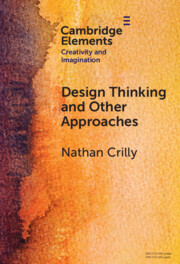4 results

Mathematical Notations
-
- Published online:
- 30 January 2025
- Print publication:
- 30 January 2025
-
- Element
- Export citation
Chapter 6 - Using digital technologies to learn mental procedures
- from Part 2 - Designing and enacting learning and teaching with digital technologies
-
- Book:
- Supporting Innovative Pedagogies with Digital Technologies
- Published online:
- 24 July 2024
- Print publication:
- 13 June 2024, pp 98-118
-
- Chapter
- Export citation

Design Thinking and Other Approaches
- How Different Disciplines See, Think and Act
-
- Published online:
- 10 June 2024
- Print publication:
- 03 October 2024
-
- Element
- Export citation
12 - Creativity
- from Part II - Pedagogy in Interaction
-
-
- Book:
- Talking with Children
- Published online:
- 16 June 2022
- Print publication:
- 30 June 2022, pp 247-265
-
- Chapter
- Export citation

